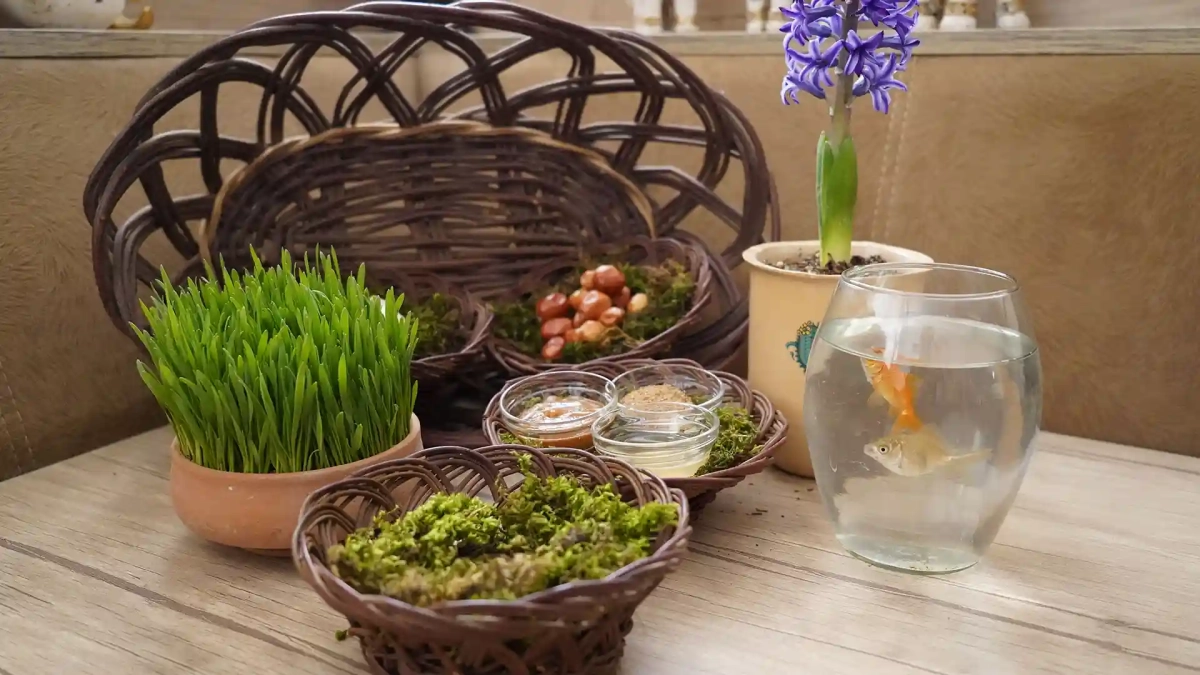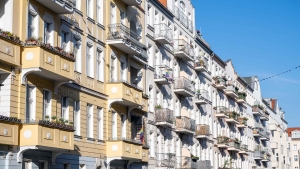Nowruz in Germany: Celebrating Persian New Year Abroad
- Nowruz in Germany: Celebrating Persian New Year Abroad
- The Meaning of Nowruz
- Why Norouz Falls on March 20 Every Four Years
- The Accuracy of the Persian Calendar
- Norouz and Science: The Astronomical New Year
- Norouz in Germany: A Celebration of Unity and Identity
- Community Gatherings and Events
- Adapting Norouz to a German Setting
- Food and Culinary Traditions
- Countries That Celebrate Norouz
- Challenges of Celebrating Norouz in Germany
- The Role of Norouz in Preserving Identity
- Norouz Beyond Iranians in Germany
- FAQ:
Nowruz, also spelled Norouz, marks the Persian New Year and the arrival of spring. It has been celebrated for over 3,000 years. The festival has roots in Zoroastrian traditions and is cherished by millions worldwide.
For Iranians and other communities in Germany, Norouz is more than a festivity. It’s a cultural bridge connecting their heritage with their lives abroad. Unlike many well-known celebrations, Norouz is not a religious holiday. It celebrates the first day of spring and embodies themes of renewal, unity, and hope.
Iranian Atheists, Jews, Muslims, Christians, Zoroastrians, and people of all faiths and backgrounds celebrate Norouz as a unifying cultural event. For Iranians, it is as significant as Christmas, Easter, and New Year combined. It’s a time for family, joy, and renewal—but with no religious purpose. Here’s a detailed exploration of how Norouz is celebrated in Germany.
The Meaning of Nowruz
Norouz, meaning “new day” in Persian, coincides with the vernal equinox. This is usually on March 20 or 21. In 2025, Norouz will begin at 12:31 PM local time in Iran and 10:01 AM in Germany on March 20.
Scientifically, Norouz marks the exact start of spring. Thousands of years ago, people in ancient Persia calculated this astronomical moment with astonishing accuracy. It symbolizes renewal, growth, and the triumph of light over darkness. Norouz celebrations last for 13 days and include several significant rituals.
Key Traditions of Nowruz
- Spring Cleaning (Khaneh Tekani): Before Norouz, families thoroughly clean their homes. This symbolizes a fresh start and the removal of negativity.
- Haft-Seen Table: The centerpiece of Norouz is the Haft-Seen table. It is set with seven symbolic items starting with the Persian letter “S” (س):
- Sabzeh: Sprouted wheat or lentils symbolizing rebirth.
- Sib: Apples representing health and beauty.
- Serkeh: Vinegar symbolizing patience.
- Samanu: A sweet pudding for power and strength.
- Senjed: Dried oleaster fruit representing love.
- Seer: Garlic for medicine and protection.
- Somagh: Sumac berries symbolizing the sunrise. Additional items often include goldfish, candles, painted eggs, and a mirror. Each item adds to the themes of renewal and hope.
- Chaharshanbe Suri: On the last Tuesday night before Norouz, people jump over bonfires. This symbolizes health and strength for the year ahead.
- Eidi (Gift-Giving): Elders give money or gifts to younger family members. These blessings are meant to ensure prosperity.
- Sizdah Bedar: The 13th day of Norouz, known as Sizdah Bedar, falls on April 2 in 2025. People spend this day outdoors, picnicking with loved ones. It is believed to ward off bad luck and connect with nature.
Why Norouz Falls on March 20 Every Four Years
Every few years, Norouz shifts from March 21 to March 20 due to the difference between the solar year and the Gregorian calendar year. The solar year, based on Earth’s orbit around the sun, is approximately 365.2422 days long. This discrepancy accumulates over time.
Ancient Persian astronomers accounted for this precision when establishing Norouz. To align with the vernal equinox, adjustments ensure Norouz reflects the true start of spring. The leap year system in the Iranian calendar corrects these shifts, keeping Norouz astronomically accurate.
The Accuracy of the Persian Calendar
The Persian calendar, also known as the Solar Hijri calendar, is the most accurate calendars in the world. It is a solar calendar based on the Earth’s precise orbit around the sun. This calendar, which has been in use for over a millennium, is closely tied to astronomical calculations, making it exceptionally accurate.
The Solar Hijri calendar aligns with the vernal equinox to determine the start of the Persian New Year, Norouz. The new year begins at the exact moment when the sun crosses the celestial equator, resulting in equal day and night lengths. This moment is calculated with incredible precision, down to the second, and varies slightly each year due to the Earth’s elliptical orbit and axial tilt.
One of the reasons for its accuracy is the incorporation of leap years to account for the discrepancy between the solar year (approximately 365.2422 days) and the 365-day calendar year. Unlike the Gregorian calendar, which follows a fixed pattern of leap years, the Persian calendar uses a more complex 33-year cycle based on astronomical observations. This cycle includes 8 leap years distributed irregularly to ensure alignment with the solar year.
The calendar’s astronomical foundation was laid during the reign of Sultan Jalal al-Din Malik Shah in the 11th century, with contributions from prominent scholars like Omar Khayyam. Its precision surpasses the Gregorian calendar, which has a one-day error every 3,226 years. In contrast, the Persian calendar’s error is estimated to occur only once in 110,000 years.
This unparalleled accuracy reflects the scientific and cultural legacy of ancient Persia, keeping the calendar in perfect harmony with the natural cycles of the Earth and the cosmos.
Norouz and Science: The Astronomical New Year
Norouz is not just a cultural celebration; it is deeply rooted in science. It marks the exact moment of the vernal equinox when day and night are equal in length. This precise astronomical event signals the start of spring in the Northern Hemisphere.
Thousands of years ago, ancient Persian astronomers used advanced calculations to determine the exact time of the equinox. The significance of minutes and even seconds in announcing the new year lies in this precision. The Earth’s tilt and orbit around the sun create this unique moment, and its accuracy underscores the importance of Norouz as a scientifically informed tradition.
For Iranians, celebrating Norouz at the precise time of the equinox connects them to nature and the cosmos. It’s a reminder of the harmony between humanity and the natural world. This scientific foundation sets Norouz apart from many other cultural celebrations, blending tradition with astronomical knowledge.
Norouz in Germany: A Celebration of Unity and Identity
Germany is home to over 200,000 Iranians, as well as Afghans, Kurds, and Tajiks who also celebrate Norouz. This multicultural landscape makes Norouz vibrant and significant.
Preparing for Norouz in Germany
- Finding Cultural Essentials: Persian stores in cities like Berlin, Hamburg, and Frankfurt stock items such as dried herbs, sumac, and traditional sweets. Specialty shops and online retailers ensure families can set up authentic Haft-Seen tables.
- Spring Cleaning: Families in Germany uphold the tradition of Khaneh Tekani. They clean their homes, rearrange furniture, and decorate with fresh flowers like hyacinths and tulips.
- Creating the Haft-Seen: Assembling a Haft-Seen is an essential part of Norouz. Community events and Persian shops provide guidance for those new to the tradition.
Community Gatherings and Events
Norouz in Germany is as much about community as personal celebration. Major cities host events that bring people together.
Norouz Concerts and Performances
Musical performances by Iranian artists are a highlight of the season. Venues in Berlin, Munich, and Hamburg host concerts featuring traditional Persian music, modern pop, and dance.
Cultural Festivals
Organizations like the Iranian Cultural Association organize Norouz festivals. These often include:
- Traditional Dances: Showcasing regional dances from Iran.
- Food Stalls: Serving Persian dishes like sabzi polo ba mahi and shirini.
- Workshops: Teaching Persian calligraphy and Haft-Seen preparation.
Embassy Celebrations
The Iranian embassy in Berlin hosts Norouz receptions. These highlight Persian culture through speeches, performances, and traditional cuisine.
Adapting Norouz to a German Setting
Celebrating Norouz in Germany involves creative adaptations to fit local customs and laws.
Chaharshanbe Suri in Urban Settings
Public bonfires are not feasible in most German cities due to safety regulations. Instead, Iranians light small fires or candles in parks and private gardens. These gatherings include Persian music and traditional snacks.
Sizdah Bedar in German Parks
Parks like Tiergarten in Berlin or English Garden in Munich are popular spots for Sizdah Bedar. Families picnic, play games, and enjoy Persian food outdoors.
Food and Culinary Traditions
Food is central to Norouz. Iranians in Germany prepare traditional dishes, often sharing them with German friends and neighbors.
Iconic Norouz Dishes
- Sabzi Polo Ba Mahi: Herb rice with fried fish, symbolizing prosperity.
- Kookoo Sabzi: A Persian herb frittata.
- Ash Reshteh: A hearty noodle soup symbolizing good fortune.
- Sweets: Shirini, such as baklava and nan-e nokhodchi, are essential for guests.
Finding Ingredients
Some ingredients like fresh herbs are available in German markets. Others require visits to Persian or Middle Eastern shops. Online stores also help fill gaps.
Countries That Celebrate Norouz
Norouz is not exclusive to Iranians. Other countries celebrate it, adding their cultural flavor:
- Afghanistan: Similar customs include Haft-Seen tables and festive meals.
- Tajikistan: Celebrations feature dances, poetry, and colorful clothing.
- Kurdistan: Norouz is a symbol of resistance and cultural pride, marked by public gatherings and music.
- Uzbekistan and Turkmenistan: Norouz is celebrated with fairs, communal meals, and games.
- Azerbaijan: Large public events, traditional sweets, and symbolic acts like jumping over fires are common.
- Albania and the Balkans: Celebrated by the Bektashi community with shared meals and festivities.
Challenges of Celebrating Norouz in Germany
Despite enthusiasm, Norouz in Germany has challenges:
- Work and School Commitments: Norouz is not a public holiday in Germany. Many Iranians balance celebrations with work or school schedules.
- Weather Constraints: Spring in Germany can be cold, making outdoor celebrations less comfortable than in Iran.
- Limited Access to Traditions: Newcomers may struggle to understand or access Norouz traditions. Community events help bridge this gap.
The Role of Norouz in Preserving Identity
Norouz is more than a holiday. It preserves cultural identity and passes it to future generations. Parents teach their children about Persian heritage, language, and values through Norouz.
Multicultural Influence
Norouz celebrations in Germany often include German friends. Some Iranians incorporate German traditions, such as Easter eggs, into their Haft-Seen tables.
Building Bridges
Sharing Norouz traditions fosters understanding and strengthens community ties. Germans often join their Iranian friends in celebrating the arrival of spring.
Norouz Beyond Iranians in Germany
While Iranians are the primary celebrants, other communities in Germany also embrace Norouz:
- Afghans: Celebrate Norouz with unique regional dishes and traditions.
- Kurds: Mark Norouz with public gatherings and music.
- Tajiks: Celebrate with poetry readings and vibrant clothing.
These celebrations highlight Norouz’s universal themes of renewal and hope.
Norouz in Germany is a blend of tradition and adaptation. For Iranians and others, it’s a time to honor their roots and embrace renewal. Whether through Haft-Seen tables, community events, or picnics in parks, Norouz continues to thrive, bridging cultures and bringing people together in celebration.
FAQ:
When exactly is Nowruz 2025?
Nowruz 2025 begins at the exact moment of the vernal equinox, which is on Thursday, March 20, 2025, at 12:31 PM in Iran and 10:01 AM in Germany.
How do Iranians celebrate New Year’s in Germany?
In Germany, Iranians celebrate Nowruz with Haft-Seen tables, spring cleaning, cultural events, concerts, and outdoor picnics like Sizdah Bedar, blending tradition with local adaptations.
Are Muslims allowed to celebrate Nowruz?
Yes, Muslims, along with people of all faiths, celebrate Nowruz. It is a cultural, non-religious event that marks the start of spring and promotes renewal, unity, and joy.
Is Nowruz only for Iran?
No, Nowruz is celebrated in many countries, including Afghanistan, Tajikistan, Uzbekistan, Kurdistan, Azerbaijan, and parts of the Balkans, each adding its cultural uniqueness.
How informative was this article?
Click on a star to rate it!
We are sorry that this post was not useful for you!
Let us improve this post!
What is missing in the article?















